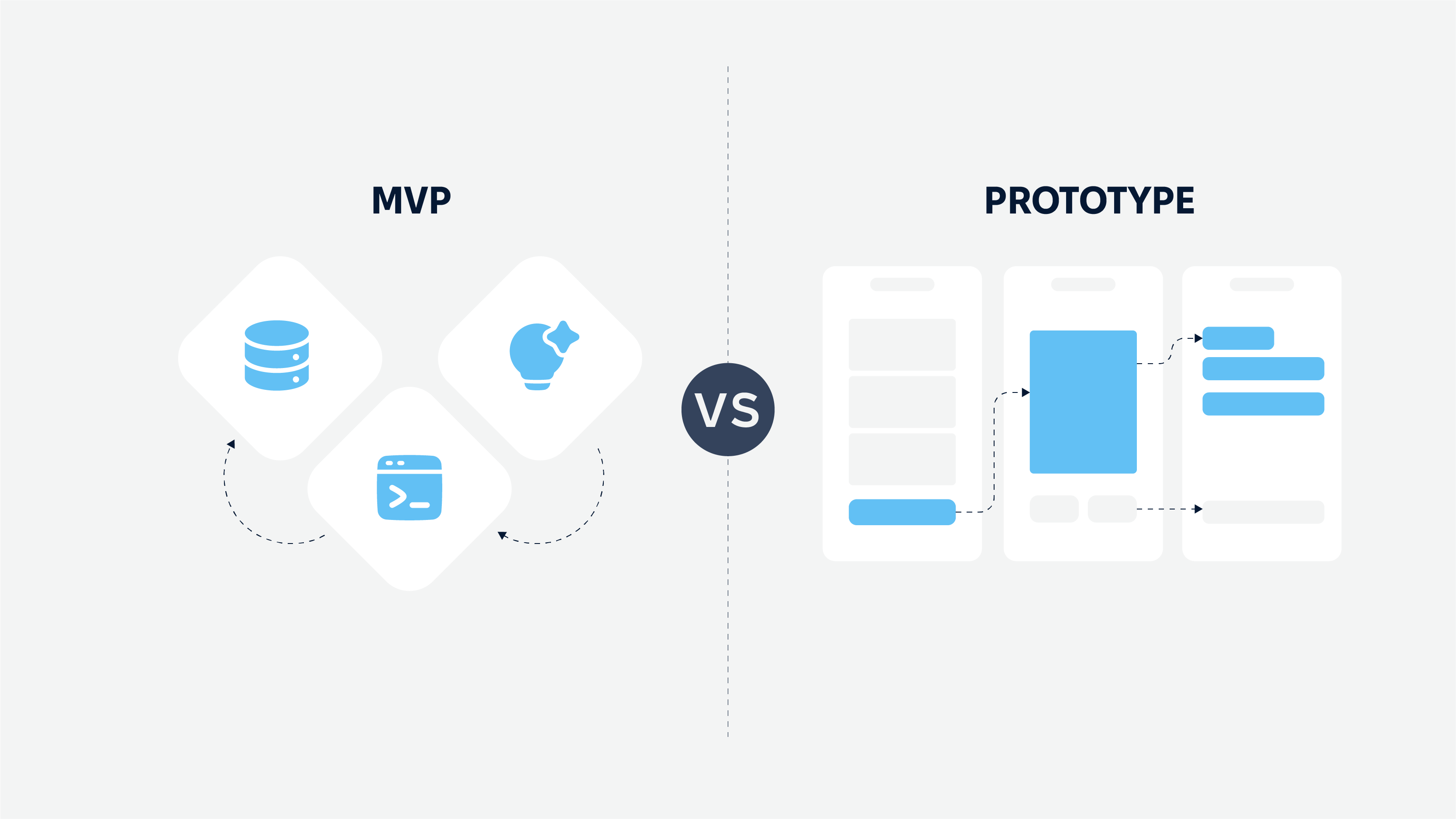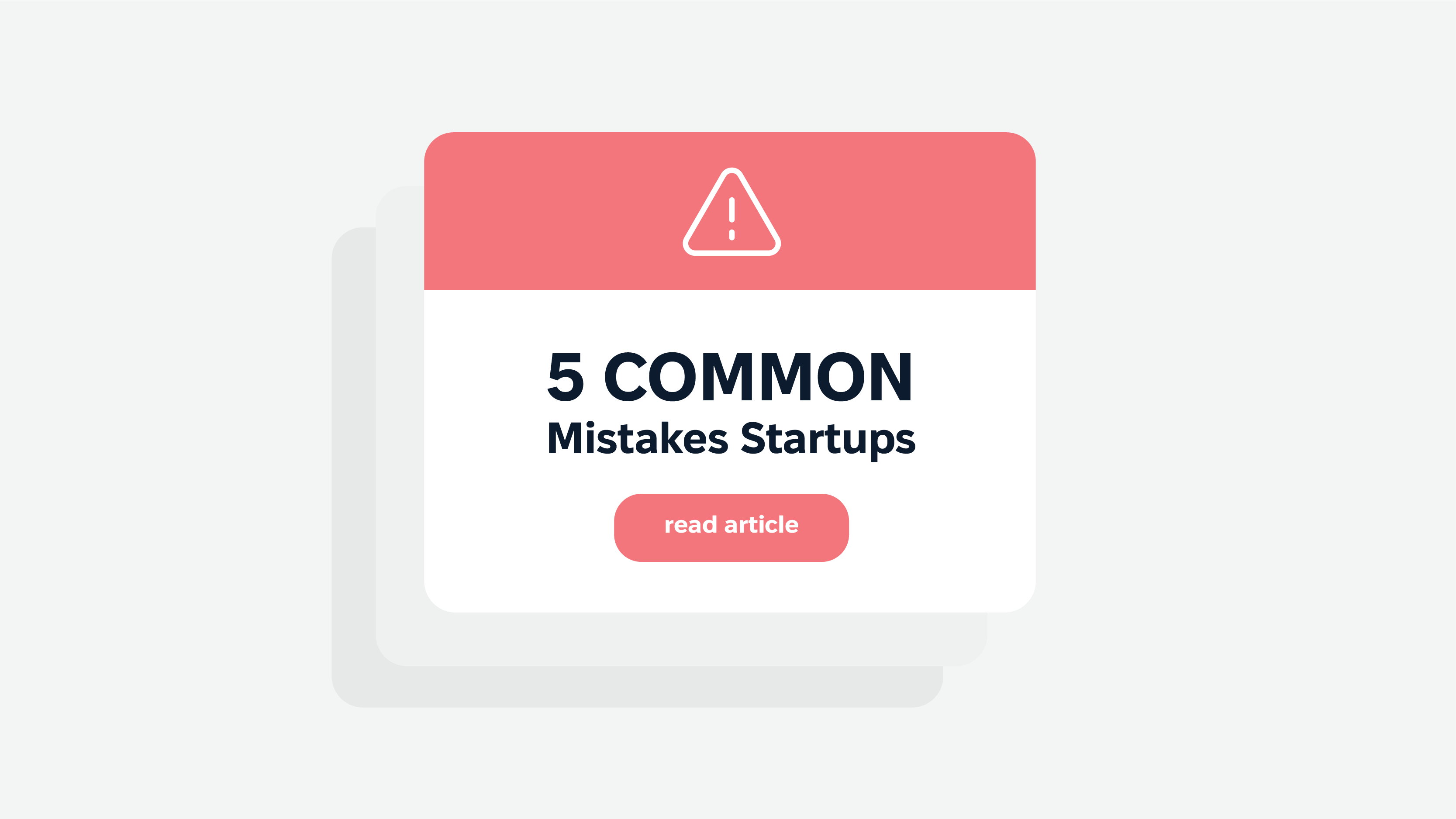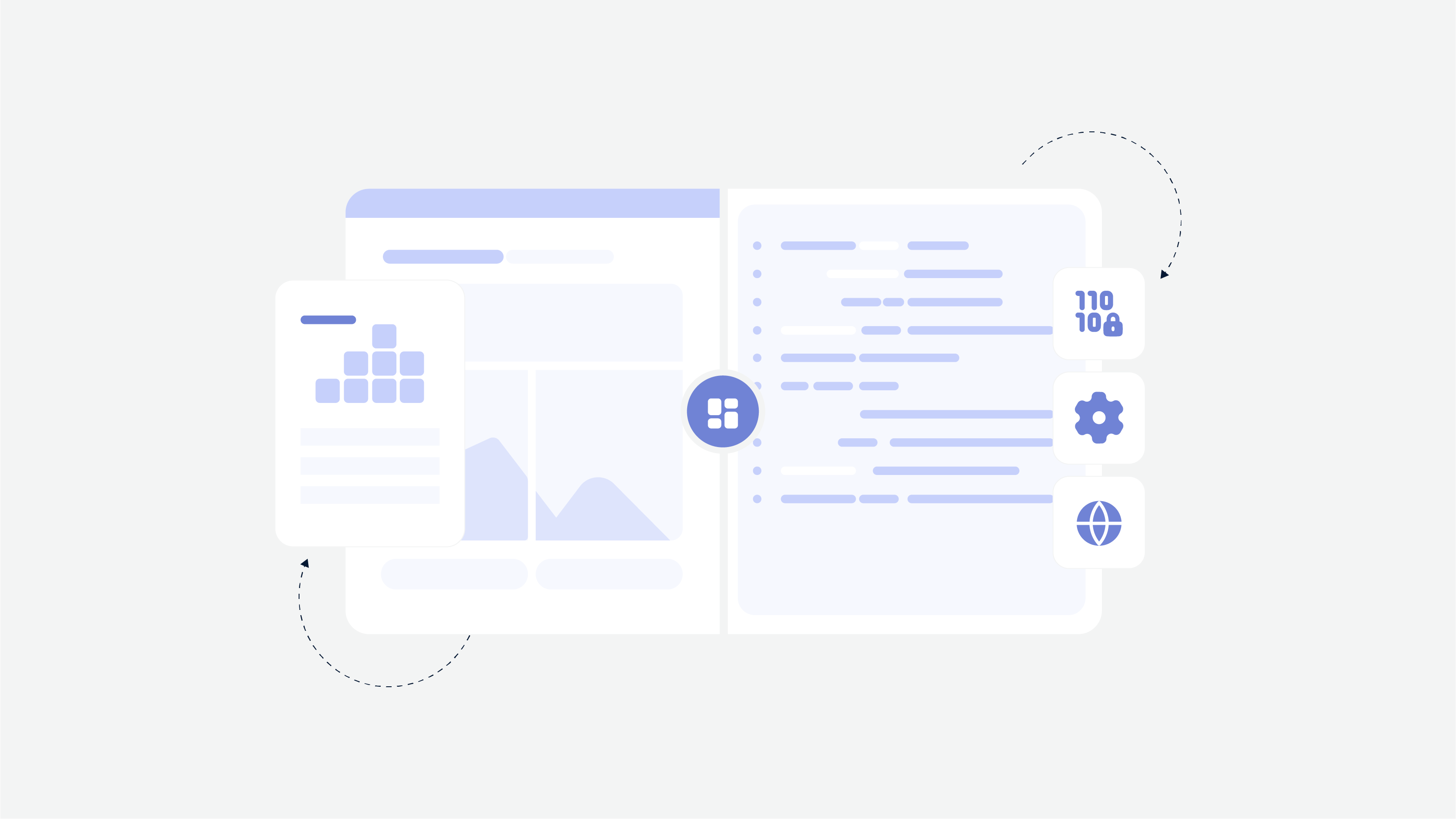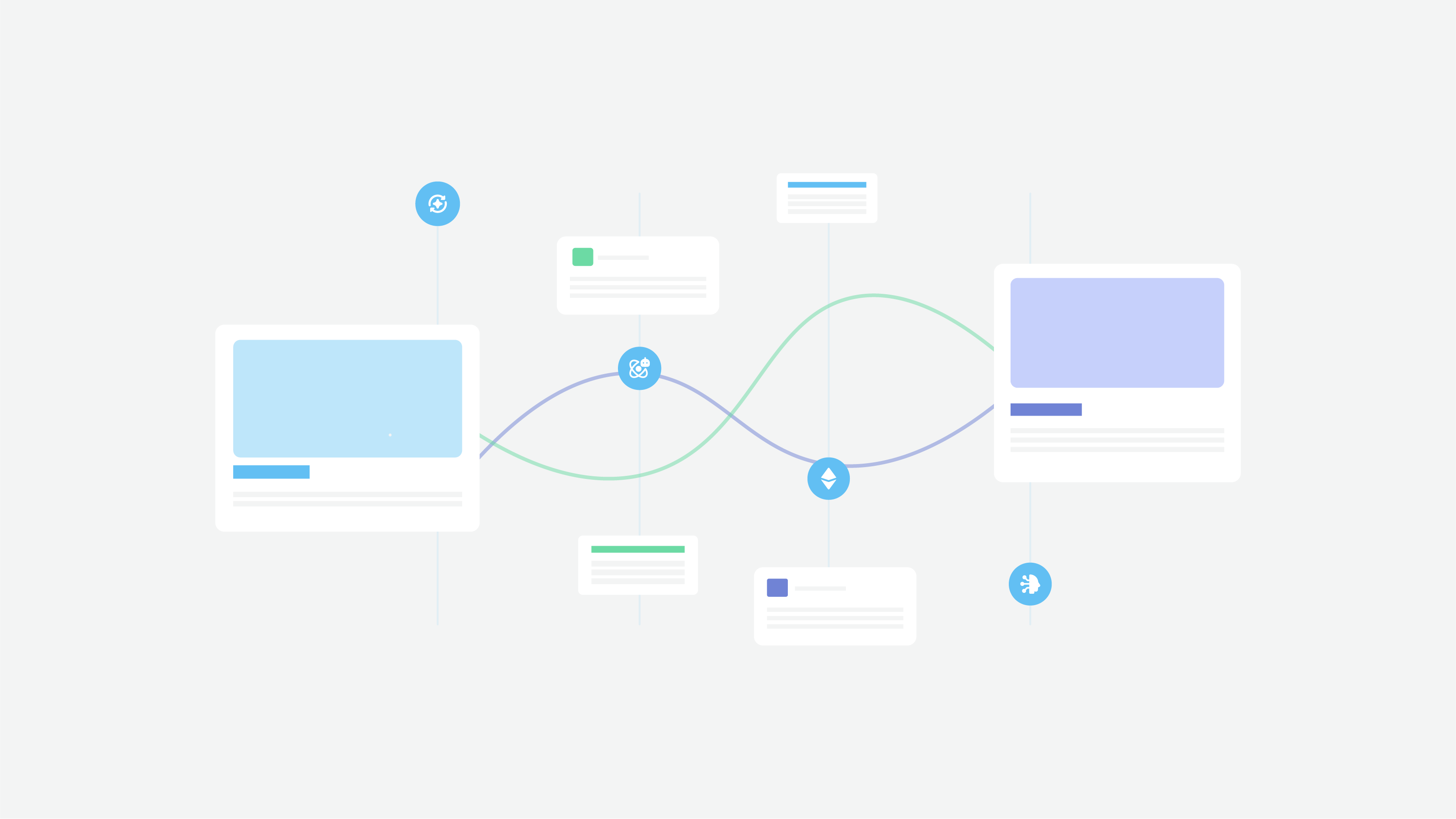In current conditions, any business industry is a severe competition, a race for survival. The popularity and success of a product are determined by the target audience. And very often, the wrong approach to determining users’ needs and desires leads to the collapse of really good products.
MVP software development is a way to decide whether it is worth continuing to create software and what can be changed in it for the better. However, this is only a superficial goal.
In this article, we will discuss the meaning of a minimum viable product, why it is needed and how it can be used.
What Does MVP Mean in Software Development?
MVP, i.e., minimum viable product, is a product with a sufficient minimum number of functions to attract customers and verify the viability of its idea in the early stages of development. The presence of basic functions makes the product suitable for intended use, receiving user feedback, improving and adjusting based on the gathered information.
So, what does MVP mean in software development? This is the main tool for checking iterations of software development based on real user experience, which allows you to use the data obtained in a practical way for the proper formation of the final product version.
What is the main goal of MVP in software development? It helps to test the business idea of the product without creating a complete set of features and with real representatives of the target audience before allocating the budget for full development. In this way, you can get rid of unnecessary components in the early stages and determine what resonates with users’ needs and what does not.
How Does It Work in General?
The first part of working with MVP is filtering features according to basic user needs. After creating feature sets and their specifications, a simple design is developed.
After that, the MVP is deployed for testing by the first users who provide detailed and honest feedback. The collected data is the basis of improvements and changes in the future development of full-fledged software.
The product in this form can be launched for testing until market demand is confirmed and users are maximally interested in it. However, frequently, if the features do not grab the attention of the target audience at all, and the test results are unsatisfactory, business owners may decide to stop development in order to save money for more promising and successful projects.
So, summarizing everything said above, a good software development MVP should include:
- a sufficient number of basic features that support the business idea;
- a convenient and effective way of feedback so that the “focus group” can freely and honestly share experiences about using the proposed software;
- a mechanism for filtering user needs based on the received data.
It will also not be superfluous to include the benefits for users, which are bet on when planning software development.

Benefits of MVP in Product Development
Because MVP software development allows experiments with test assumptions, as well as assess risks at each development iteration, the team has enough data to create a proven product focused on specific customer needs. However, these are not the only advantages.
Fast Time to Market and Market Demand Verification
Such a development approach allows you to bring the product to the market much faster and start forming brand awareness even before the complete software version is launched.
Additionally, testing a minimum viable product helps you see what works and what doesn’t and understand all the nuances of market demand for further development. This is how you can determine new market directions and niches that can be occupied.
Cost-Efficiency
MVP development for startup helps to test the viability of an idea and concept before spending a lot of resources on the development. You create only the necessary features that will become the basis of the product in the future. And when you find user dissatisfaction, you know what you should give up and not spend money on.
If we talk in more detail, then this approach allows you to save money thanks to
- Opportunities to invest smarter. Most of the mature and successful tech products are developed not only at the expense of third-party investments but also due to the reinvestment of income. Using a software development MVP allows you to avoid unnecessary complexity of infrastructure and features, which, in turn, helps to invest in what really matters.
- Support from investors and third parties. A proven product demonstrates real benefits and market value that is compelling to stakeholders or investors.
- Development of the right monetization strategy. Such testing helps to choose the right tools for generating income and creating successful monetization strategies.
In other words, it helps to get additional funds for development and save existing resources thanks to filtering necessary features.
Wide Opportunities for Research of the Target Audience and Its Needs
The assumption that the product meets the target audience’s needs is not always correct. MVP in product development helps to determine which unique qualities make the software most attractive to the target audience and to understand how to overtake competitors in the market.
Because you first test the idea for user perception, you can also learn more about your target audience and their non-obvious but important needs. Research results can always be offered to investors to confirm the value of the product and increase capital investment.
In addition, functional interaction with users allows you to transform the software or its concept in such a way that it has room for improvements in the future.
More Space for Testing
Preliminary testing with real users provides a huge space for checking ideas and finding the best ways to eliminate shortcomings. No other testing method offers such wide possibilities. In general, this is the most effective way to maximize the chances of product success without spending a lot of money, time, and resources.
MVP development for startups also allows you to determine the most active users and the nature of their interaction with the program. This data can be used to customize the functionality of the application and its interface.
Why is this so important? According to Forester research, a quality user interface can increase a website’s conversion rate by up to 200%. The same study claims that a suitable UX can increase conversion rates by up to 400%.
Therefore, the timely launch of MVP also helps to test the UI/UX design and adjust it in time for optimal user engagement.
How is MVP Different from Prototype?
A prototype is a product sample created precisely for testing and demonstration purposes. Unlike MVP in software development, it is not used for market verification, demand determination, etc. Its task is to demonstrate an original concept or detailed functionality.
A prototype is needed to present the product to investors and stakeholders, as well as to test the functionality in possible scenarios by the development team. Accordingly, changes in it are not initiated by the first users but by the owners of the product.
Types
There are several main types of prototypes, depending on the purpose of use and features of the formation. It can be
- Lo-Fi or low-fidelity prototypes. Most often, this is a visualization of functions, but without an interface and real conditions for checking the feature. It is needed only for presentations.
- Hi-Fi or high-fidelity prototypes. Functional prototypes are similar to the final development product. They are used not only for demonstration but also for functional testing.
As you can see, both options are used differently.
MVP vs. Prototype: The Main Differences
First of all, both options have different purposes. MVP is needed to check the demand and feasibility of business ideas, while prototypes are used to demonstrate and test the feature’s functionality.
Another difference follows from this: prototypes have not only basic but also additional features since they are created to test functionality. However, not all features may work if the prototype is used to test the placement of features and infrastructure.
Also, these two concepts have different appearances. In the case of a prototype, it should look like the final product. At the same time, a minimally viable product has only the basic design necessary for interaction with the user.
Another difference is the frequency of use. An MVP is developed once and transformed until it is tested and validated by market demand. The prototype, in turn, is used for all iterations of the software, including for the development of the MVP.
And the last point is the level of finding and solving problems. A minimum viable product identifies common problems and shortcomings, while a prototype is needed to identify issues with existing features.
How To Build A Valuable MVP That Users Want To Test?
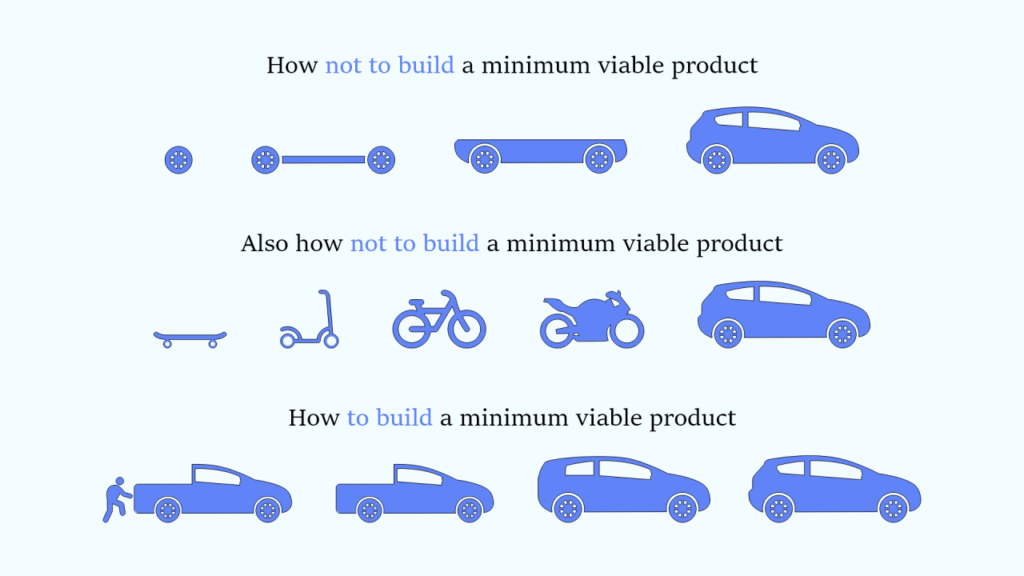
The success and usefulness of an MVP depend directly on the ability to use the feedback and data received properly. In order to find an interested audience, it is necessary to create a product that could engage users, make them want to test it and freely share their thoughts.
In addition, developing an MVP that would perfectly fit into your chosen market niche and meet the target audience’s needs is essential. Without it, the product can pass the test successfully, but it will not achieve the desired success after launch.
So, let’s discuss a few important points that will help create a relevant minimum viable product and facilitate the MVP development process.
1. Product Goals Align With Business Objectives
The planned MVP should have a clear purpose that fully corresponds to your strategic goals and business objectives. The alignment between these concepts should define what the product will be used for and how it will be presented in the market.
In the future, the correct priorities will help to choose the right features for testing, as well as to determine whether the software will be able to solve the problems of a large segment of the customer base. In addition, they will become the basis of its development, which will determine the principal value of the software.
2. Clear User Needs and Specific Problems That MVP Can Solve
After agreeing on the business objects and goals of the MVP, it is important to move on to specifics regarding the target audience. It is important to clarify exactly what you offer users.
This is an important part of the strategy that defines the limited list of features and the vision of the product. Therefore, it is worth conducting a detailed study of the target audience, competitive analysis, market research, and on the basis of this, determine the place and users for testing.
In other words, to get truly relevant feedback, you need to identify your audience’s pain points and your tools to solve those problems. In this case, you will see where to move within the chosen development strategy.
3. Testing Format
Choose exactly how your product will interact with users and how you will receive feedback. There are several common options for the MVP development process.
- Interviews with clients. This is a good option for identifying the problems the user is facing and understanding whether your product can solve them. From this, you can get a relevant sample and clarify the shortcomings that need to be solved.
- A/B tests or split testing. This option is used to test two different versions of the product. In this case, choose one validation parameter at a time, success metrics, etc. In the end, statistically significant data from both versions are compared.
- Experimental testing. This is the most practical approach that is based on conducting a one-time experiment that includes using the product by real customers.
- Landing pages. This a great option in case you want to connect with your target audience and show them your MVP. This way, you can test the main features and collect important engagement indicators.
- Manual-first MVP. Help create the impression of a complete product and test it on many levels with a small investment. When a user orders a service, the team delivers it manually.
- Piecemeal MVP. A method of testing the product without creating MVP from scratch and at the expense of existing platforms.
The test format is chosen depending on the features and goals of the software, as well as the project budget.
4. The Actual Functional Minimum
Your MVP should be as simple as possible. Therefore, it is important to filter the features and to determine the actual minimum, dividing their number by 8. In this way, you can select the essential functionality for testing.
5. Success Criteria
Correctly assessing the success of MVP is no less important than obtaining relevant test results. Define the success indicators that will signal that the product has passed the test. For example, it can be the minimum number of satisfied customers, positive reviews, the engagement rate, etc.
6. Development Action Plan
MVP development for startup is about following a clear plan. Therefore, it is very important to create strategic development guidelines, considering everything described above. So you can follow the process of transformations and improvements and track all critical changes.
MVP Development in Cadabra Studio: Explained by Ihor Dyachenko, CTO
Each MVP development company has its own approach to creating a minimum viable product. Ihor Dyachenko, our CTO, best describes our vision and nuances of working with MVP.
Our Approach
We believe that the development of any software product should be divided into clear valuable stages. The most critical functionality for the business should be naturally combined into the first stage, also known as the MVP.
Clarifying the scope and priority of features in the MVP is one of the most crucial steps. At Cadabra Studio, we prefer that the BA and CTO personally participate in the initial discussion of business goals and priorities with the client.
Our goal is to make a product that would allow the client to win significant market share from competitors with the highest probability. This means that the right balance of deadlines, budget and capabilities is the key to the high efficiency of MVP development services we provide.
Based on our experience, we know that in almost any situation, the modern market obeys the rule: “the faster you release a quality product to the market, the faster you will conquer this market.”
You can make everything multi-functional, complete every single feature, release the first version a year later, and find out that all users have been feeling great for a long time using competitors’ products. And you can launch a concise product with a kicking feature in three months, attract your audience and keep it with monthly releases of new functionality. This is what we do at Cadabra Studio.
How We Work With the Client to Determine the MVP
When we discuss with a client the need to highlight some features in MVP, I often deal with concerns that we are sacrificing something while absolutely everything, the whole idea, and all the functionality are essential.
Then, explaining the essence of MVP to the client, I say: “Look, don’t worry, we don’t throw anything away; we just perform proper prioritization. It is important for us to understand as soon as possible that the idea is working and it has the right to live. Our goal is to respond to user expectations and adapt to them. We just do the most critical piece of work first, and we’ll finish the rest later”.
Example
A few examples come to my mind, but I personally explain it so:
Imagine that you’ve ordered from us a wedding cake. We’ve created a beautiful design, added cream, roses, and candles. Made it multi-layered. It will take us a month to make everything, and a little more than a month is left before the wedding.
We could be stuck at the workshop for a month, do everything right and on time, and deliver the cake: all layers, cream, and decorations. Wedding guests would have taken pictures with the cake and cut pieces for everyone. But when it came to tasting, the guests would say that the cake was not good at all: there was too much vanilla, and the cream was too greasy.
Why did it happen so? At first, we would think a lot, analyze competitors’ confectionery, and collect the best experience together. It would seem to us that we’ve found the perfect formula. We took it as a basis and started cooking the cake. As a result, most of the invited relatives did not like what we got. Nobody ate the cake.
But what if we acted differently? In the beginning, we would spend several days experimenting with dough, cream, and supplements. And then would quickly collect it all into small cupcakes. The same dough and the same ingredients, but a smaller size and fewer grand decorations. You would give these cupcakes to a focus group of your close relatives. Many would say that the dough is fresh, the vanilla intercepts the taste, and for some, the cream seems too greasy.
We would analyze this data and immediately correct the recipe. We wouldn’t have to spend another month redoing the whole cake.
Then we would think about the structure of the layers, the design of the decorations, and the order of applying different colors. We would quickly put together a small cake for you so that your focus group, and maybe neighbors, can appreciate the beauty of the product and convey their impressions.
Having collected and analyzed the next data pool, we would quickly make adjustments and take into account the focus group’s wishes in the final product.
As a result, at the wedding, everyone would admire the appearance and amazing taste of the cake and would eat everything to the last crumb, saying a bunch of thanks.
This is a simple example, it describes only some of the aspects, but it shows the importance of fragmenting the process into stages and collecting feedback from the audience. In the case of the cake, we do not lose anything from such a phasing. On the contrary, we can quickly respond to the needs of the market, to the real expectations of users, and adjust the ‘fly’.
How We Optimize the MVP Scope
At Cadabra Studio, we go even further and prioritize the tasks in the MVP itself in order to get the client some kind of product part “feeling”. Imagine, in MVP, you have a number of features:
- login via email;
- login via Facebook, Google, Twitter;
- view Posts;
- create your posts;
- communication with support.
It takes, for example, three months to develop the entire MVP.
How do we do at Cadabra Studio
We are discussing how to do it in such a way that, without sacrificing development time and financial costs, give something significant to the client as early as possible.
Then we break the whole product into smaller components, including from the point of view of technical implementation. What we have here:
- user interface with information (data);
- business logic;
- the data itself (information);
- Frontend-Backend Interaction Mechanism (API).
Next, we evaluate all components in terms of time costs. We consider several alternative implementation options. We try to parallelize work effectively between several team members.
What Can We Do in Our Example?
Suppose we’ve determined that the back-end developer should primarily write business logic and API, and the front-end developer should assemble the User Interface in the first place.
It will take them a month to do this. If we apply the trick and quickly fill the database with ‘fake’ data as a stub, in a month, we can be able to give the client a product for demonstration: all interface elements, animations, and transitions. All this will be working and real.
Yes, at this stage, the client will not yet be able to fill in the applications with his data: create his own post, enter the name, etc. The team is already preparing this functionality. So why should a client wait three months if he can just take what is ready in a month and show it to the investor?
Trick #1 is using fake data, stubs, functional emulations for an intermediate demonstration of the main features.
We discuss what we can do without in the first intermediate [draft] versions of the MVP. In our example, we can easily move the “Login with Facebook, Google, Twitter” feature to the very last sprint [stage]. Let’s imagine that in this way, the client can try the product a couple of weeks earlier. Great, right?
There may be several such features in the real product. So you can give a full-fledged version with all the killer features a month and a half earlier.
The team immediately continues to refine the product to the planned volume of features. Still, the client will already be able to show it to the focus group and investors and maybe, if desired, throw it on the market with a properly built marketing strategy. Another 1.5 months earlier than the planned MVP release date.
Trick #2 is a regrouping of “not vital” features into the latest MVP sprints.
We continue to analyze our possibilities. We see that among the alternative options for implementing the “Communication with the support service” feature, our development team has identified:
- integration and configuration of a third-party ticket system (time-consuming and expensive);
- chat and chatbot connections (expensive, requires some time);
- sending an email to the support team (inconvenient, cheap, super fast).
We confer with the client and describe to him all the advantages and disadvantages of each implementation option. We conclude that many support calls are not expected at the first stage: there are few features in MVP. We will just make excellent FAQ documentation.
As a result, we decide to use “Sending a letter to email support team” and save a significant amount of time and budget.
Trick #3 is the search for alternative compromise implementations of certain features. Rethinking and refinement of such functionality in the future.
These are just a few of the techniques that the Cadabra Studio team uses to develop MVPs effectively.
It would seem that it all sounds very logical and not so difficult. Why don’t most developers do this, you might ask?
Well, the answer is simple: to do this, you need to think of the client’s product as if it were your own. You need to spend effort, get together, brainstorm, and think through everything: strategy, delivery, and product architecture. You should also correctly convey the importance of grouping features in an MVP and its optimization to the client. It requires effort and vast experience. It is much easier not to bother and do something in stages, calling the first stage MVP.
We, as an MVP development company, know from our experience that the MVP is not just the first piece of your product but one of many. MVP is a well-planned, optimized and well-thought-out scope of functionality that will bring significant results in an extremely short time: investments, audience, recognition, and income. That’s why we take its development very seriously and make every effort on our part.
The example of the development plan.
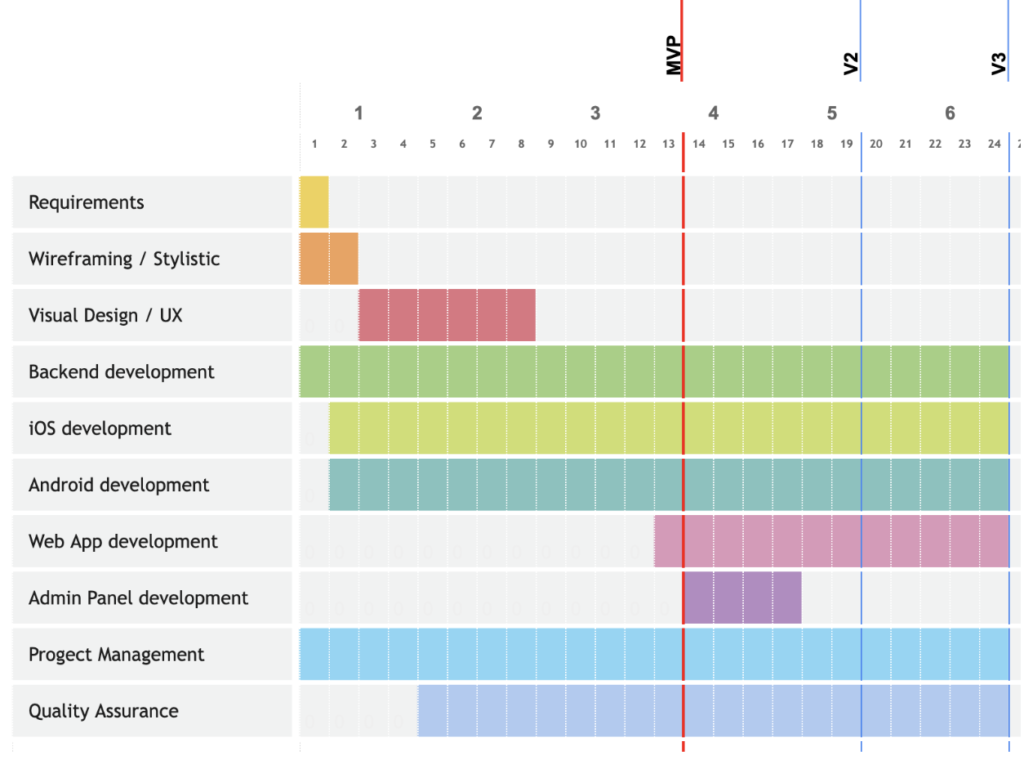
Identifying User Needs Through MVP Development
We can conclude from all of the above that defining user needs is critical. And those who provide MVP development services must be able to prepare a minimally viable product for testing correctly and effectively analyze and apply the received data.
We have a lot of experience in this area – we are talking not only about startups but also about products of different scales, purposes and industries. And we will be happy to use this experience to create your MVP. So feel free to contact us and get valuable advice.



